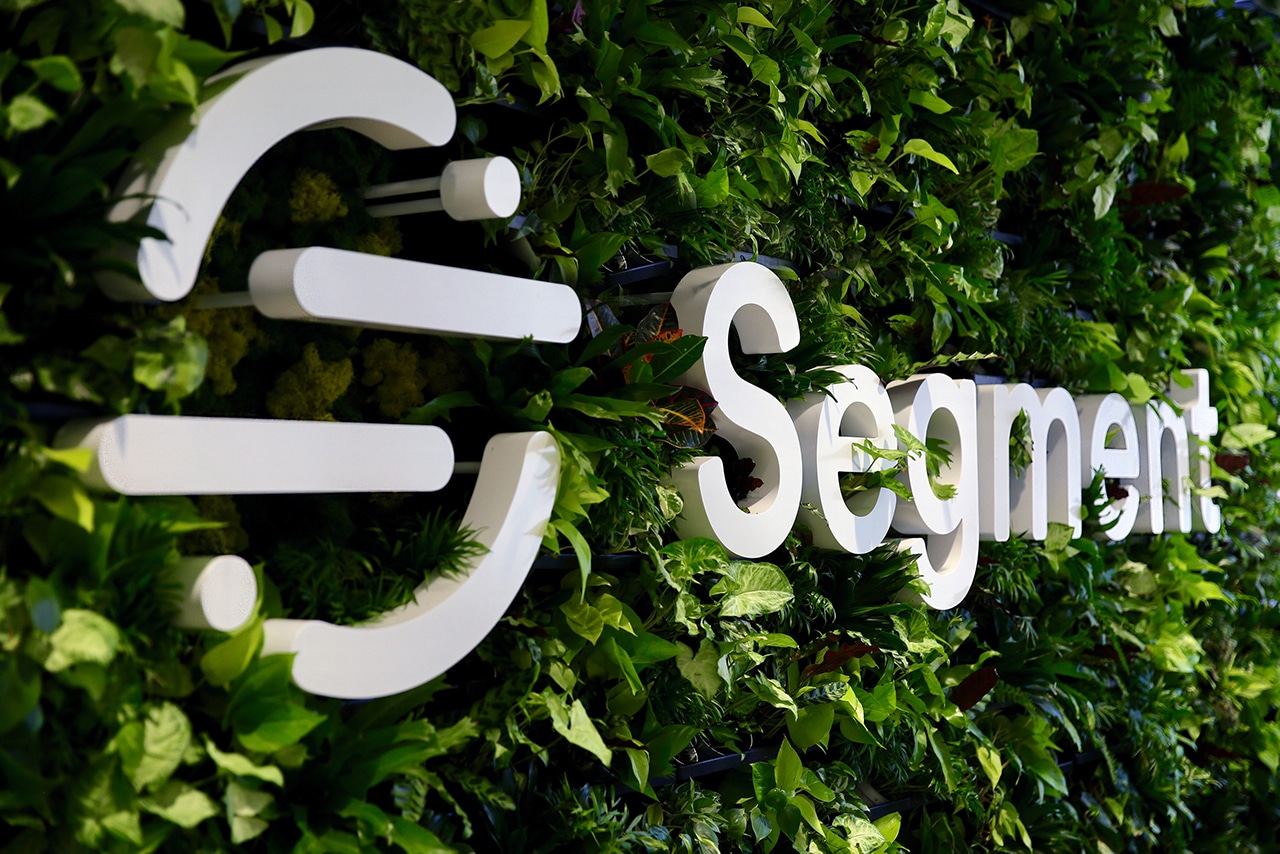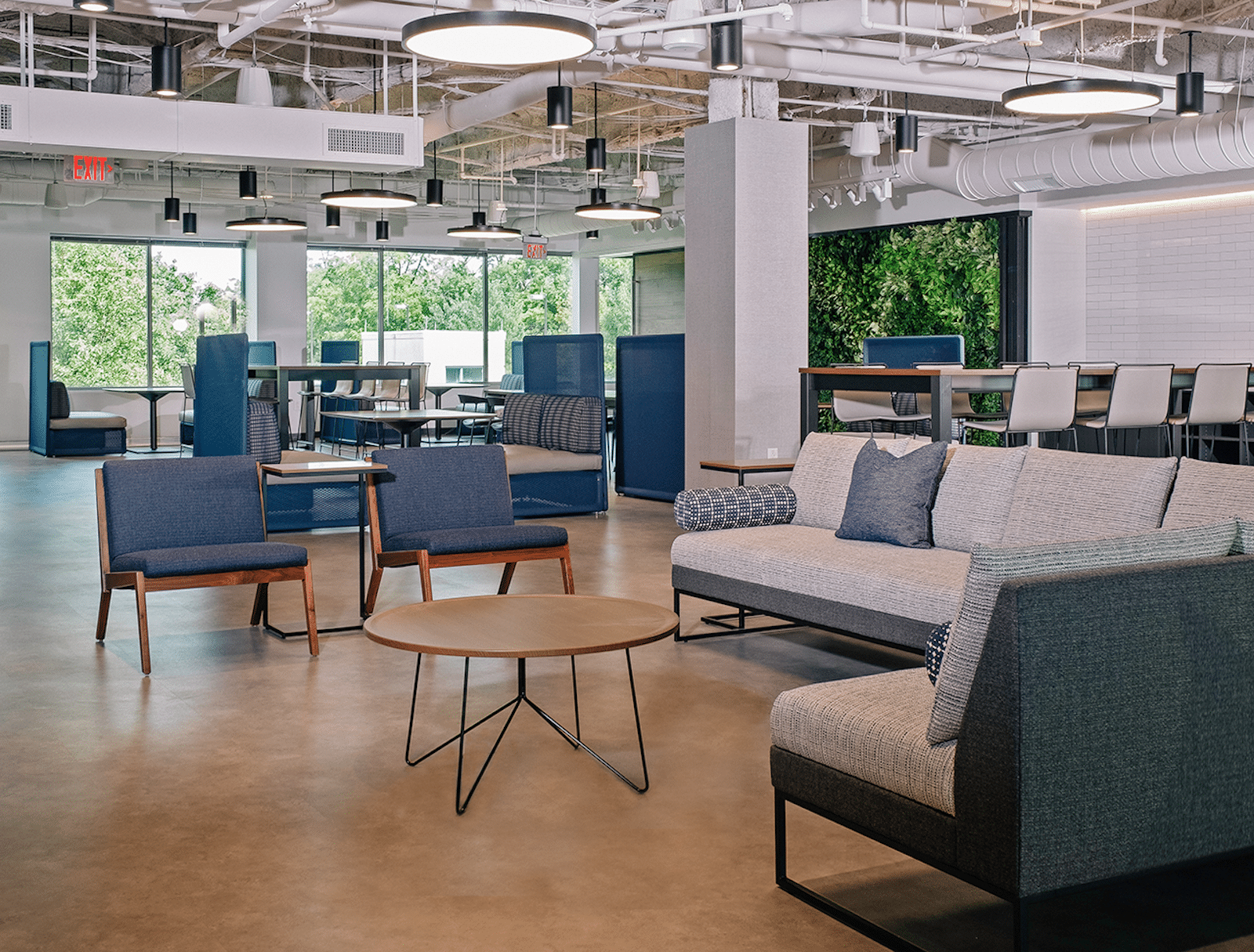
With more than 50 years of experience, Ambius’ experts work in 15 countries to improve spaces with interior landscaping, living green walls, and even scenting solutions. To date, Ambius has installed more than 700 square feet of living walls for Envestnet. [Courtesy of Envestnet]
Designs from Ambius encourage happy, healthy workplaces.
Ten years ago, when Kenneth Freeman started working with Ambius, the term “biophilic design” didn’t exist. Today biophilia is a thriving segment of design that continues to evolve, and its implementation far exceeds installing plants that please the eye (though it does that, too).
The term “biophilia” was coined by American biologist Edward O. Wilson in his 1984 book Biophilia, which describes humans’ innate attraction to nature. But it wasn’t until much later that it caught on.
Freeman, Ambius’ head of innovation, remembers first seeing the term more prominently in 2008. With his background as a biologist, he says thinking about how interior landscaping may affect people just as animals made perfect sense. He uses zoo animals as an example—they get stressed when removed from their natural environment. “We put people in offices for 8,000 hours a year,” he says. “You may as well be a lab rat.”
Consider how we’ve seen a radical shift in our everyday environment in a relatively short amount of time—we now spend on average 90% of our time indoors. As a result, we’ve learned a few other new terms, like sick building syndrome (a condition affecting office workers that’s often marked by headaches and respiratory problems), and seen an increase in diabetes, heart disease, and depression, among other issues.
While researchers have been talking about plants’ benefits and even their ability to reduce pollution for years, it wasn’t until recently that research showed how benefits go beyond the physical to psychological, as people appeared more relaxed around greenery. “We did other research, a lot of people did, that found whenever you put plants in buildings, well-being seemed to improve, but the improvements could not be adequately explained by the mere physical properties of the plant,” Freeman says. He says a plant’s metabolism is much slower indoors, so they can’t really do much to the indoor environment in terms of their biology, but what they seemed to do for the mind was great. “It seems as though they throw a switch in the brain: ‘I’m back in my normal environment, my wild environment.’ It induces this sense of well-being.”
FROM OUR JAN+FEB 2019 ISSUE
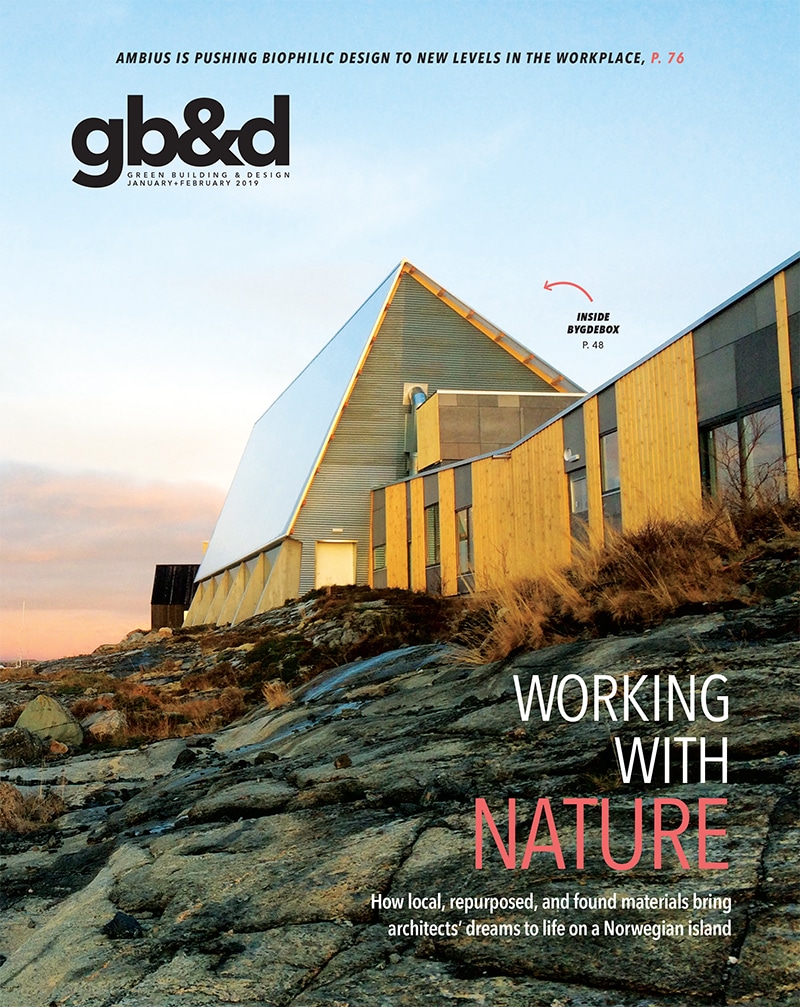
The preferred publication of leading green professionals.
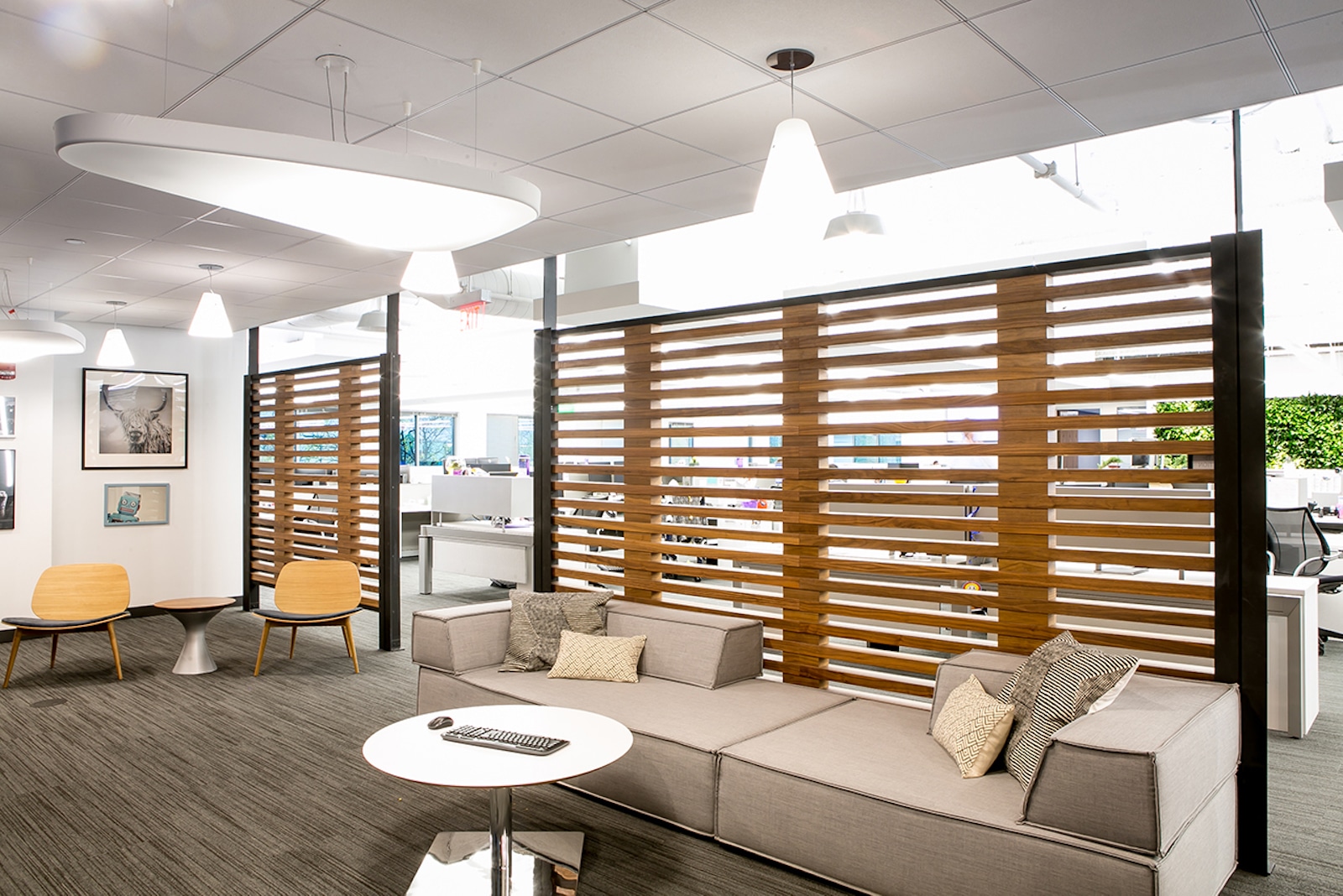
[Photo: Courtesy of Envestnet]
Design in Action
Ambius, the world’s largest interior landscaping organization, was one of the first companies to begin talking about how offices could look different (more plants) and be worth it (employee well-being). Not long ago, office design was dominated by sterile interiors and a commitment to minimalism. Many architects looked at the experts at Ambius like their suggestions were crazy at first.
“Putting plants inside buildings not only attracts new customers; they also help employees with health, wellness, and a lot of other things, including attendance,” says Matt Hills, staff architect and an expert in green wall development at Ambius. “They’re happy in their work environment.” And green walls are in demand. Hills has seen living wall projects increase from 10 to 15 a year to more than 100 in the last eight years.
Envestnet is a recent repeat client that’s worked with Ambius over the last few years. The architect Baumann Studios approached Ambius to collaborate on the Envestnet projects, as Ambius offers custom interior landscaping solutions, living green walls, and even scenting solutions. “We started with one green wall in our Philadelphia office a few years ago and loved the addition to our environment so much that we now have five large walls—including one in our main lobby—and several smaller green walls,” says Alana Gavrilis, facilities manager for Envestnet. “They really liven up the space and add to the atmosphere for both our team and visitors to our office.” Ambius specifies, designs, builds, installs, and maintains each project it does.
Ambius joined Baumann to help produce the designs and implement the installation for Envestnet, from reviewing drawings and ensuring they had the necessary plumbing and lighting design to working with the contractor throughout construction to make sure the green wall system functioned properly. No matter the project, Ambius works closely with the architect and owner to design systems that work despite any challenge you could dream of, even if that means a project needs a tank system behind the wall.
Ambius doesn’t disappear after the install, though. “We maintain all these walls. We have a team that’s dedicated to that building. I think that’s part of why clients like us,” Hills says. While many companies don’t have the capability to provide the maintenance, Ambius guarantees it and can do so easily, including on a national scale for companies with multiple locations.
Ambius has completed three of four living wall projects for Envestnet so far. The third project, completed in August, includes four green walls covering more than 500 square feet. The Ambius Philadelphia team provides the warranty and maintenance services for all the green walls at this property.
Having that maintenance guarantee is crucial, especially as the first weeks after installation are used to monitor irrigation and make sure plants aren’t under- or over-watered. Service then tapers to biweekly, where an Ambius expert comes in to check the walls, make plant replacements if necessary, and dust the plants or pull dead leaves as needed. “We want to make sure the wall is looking its best at all times,” Hills says.
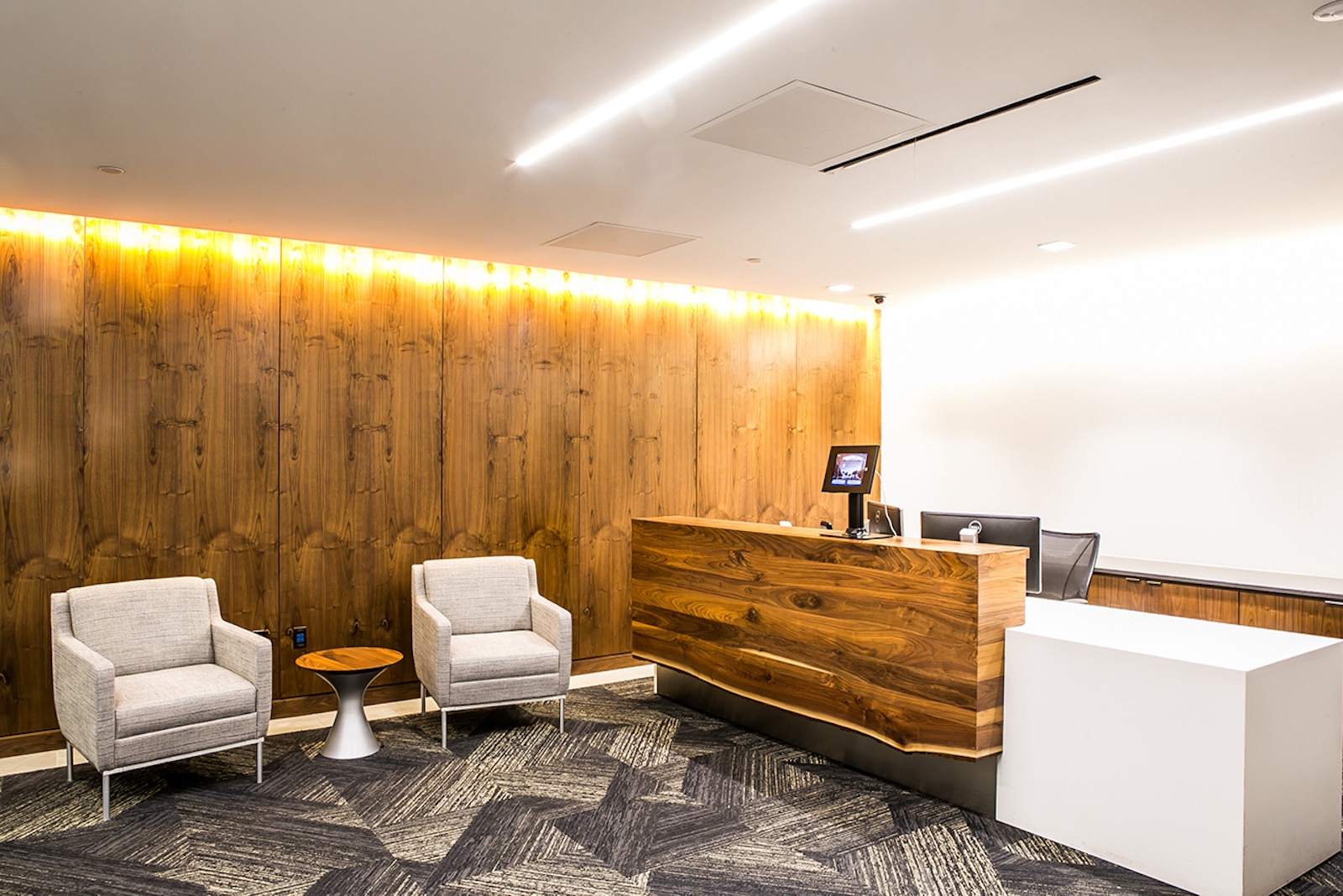
[Photo: Courtesy of Envestnet]
Easy to Incorporate
Freeman was recently struck by a conversation he had with a facilities manager who didn’t realize green walls in buildings were professionally designed and maintained. She assumed plants were brought in, installed, and that was it, thinking an office manager or someone internal had to be responsible for keeping the plants alive, for example. “I started talking about a professional services company doing it and that it might only cost as much as a premium cup of coffee from Starbucks each week,” Freeman says. “You wouldn’t trust the photocopier to be looked after by just anyone. You’d get a professional engineer. The same applies to indoor plants. They work best if maintained properly.”
You can create a strong biophilic environment without having to do much to the fabric of a building, Freeman says. “We don’t have to rewire or replumb things or knock down walls. We just have to think differently about the way we design with the plants and the containers and the accessories.” And the whole service—from design and installation to maintenance—is relatively inexpensive.
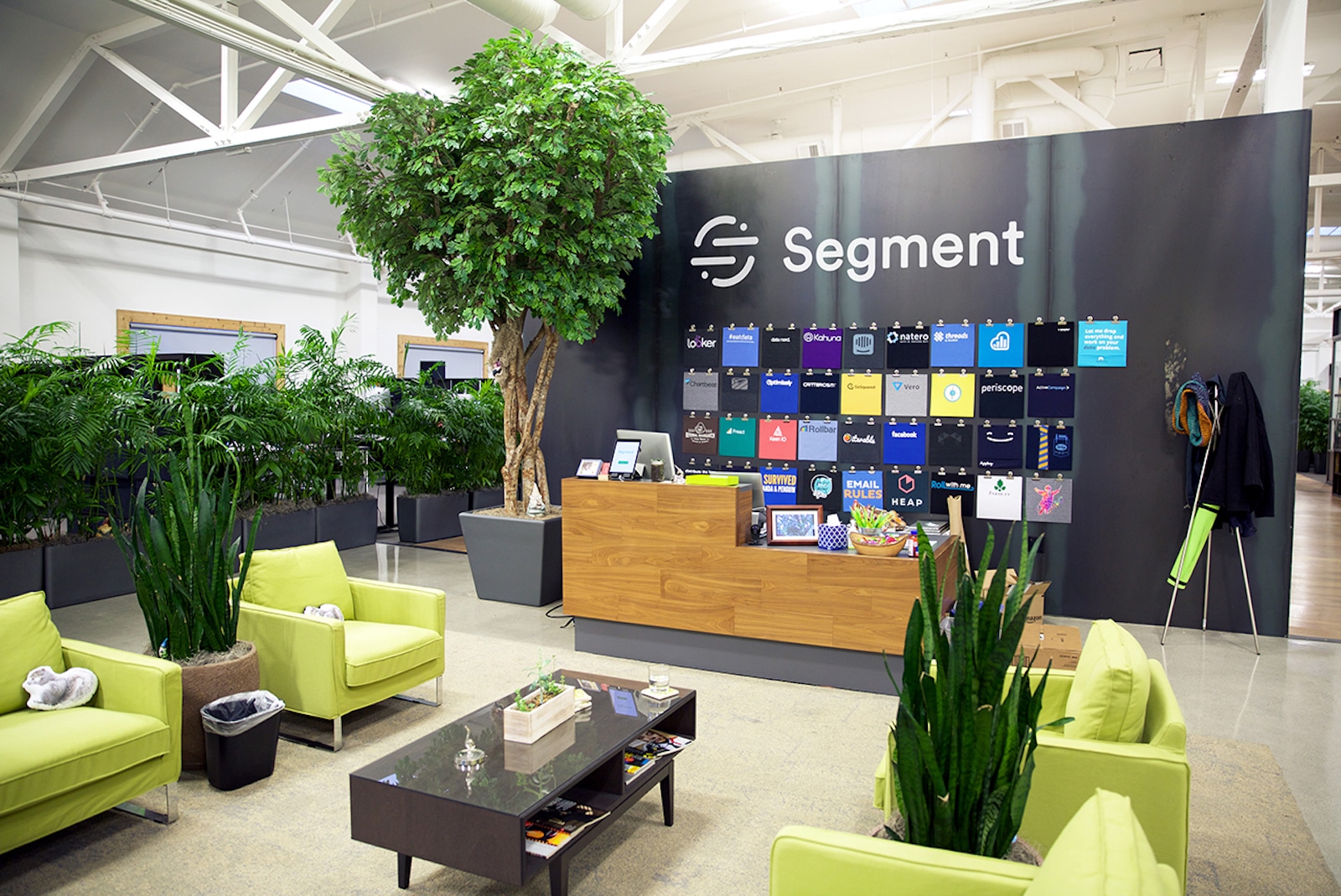
Ambius installed an 8-by-20-foot green wall and plants throughout the Segment San Francisco headquarters. It won a Gold International Plantscape Award from AmericanHort. Ambius is set to design their Vancouver and New York City spaces next. [Photo: Courtesy of Segment]
Groundbreaking Research
While green walls certainly draw attention, their benefits far outweigh being beautiful, and researchers are currently in the midst of a comprehensive study to prove just that.
Ambius is working with BRE, the world’s leading building science center, on a 30-month study that looks at biophilic design in a 7,000-square-foot office building on the BRE campus near London. The building is being refurbished based on biophilic design principles, and Ambius is working with BRE, Oliver Heath Design, and other partners to collect data on the design’s impact on the health, well-being, and productivity of office occupants. “They’re taking over refurbishing a floor in a 1980s concrete framed office, and we’re going to redesign that space along biophilic lines with different degrees of interventions,” Freeman says.
Ambius and core partners will evaluate impacts on the office environment, including daylight, lighting, indoor air quality, and acoustic, thermal, and humidity comfort. Office occupants will wear technology that allows researchers to track key health metrics and gain insight into the impact of biophilic design. They will undergo confidential health evaluations and participate in a series of online surveys. The products used will also undergo laboratory evaluation to establish whether a health and well-being potential can be quantified at product level. Results are expected to be available in early 2020.
“There are a range of organizations who are interested in working on this project with us,” Freeman says. “All with a different take on what biophilic design and well-being means. We’re all working together with BRE to actually create a genuinely biophilic space—and to properly manage it scientifically.”
It’s this first comprehensive study of its kind, and Freeman looks forward to being able to publish independently validated and peer reviewed academic research to show the effects in a real workplace. “The results of this project will tell us a huge amount. And I’m confident they’ll be good results.”
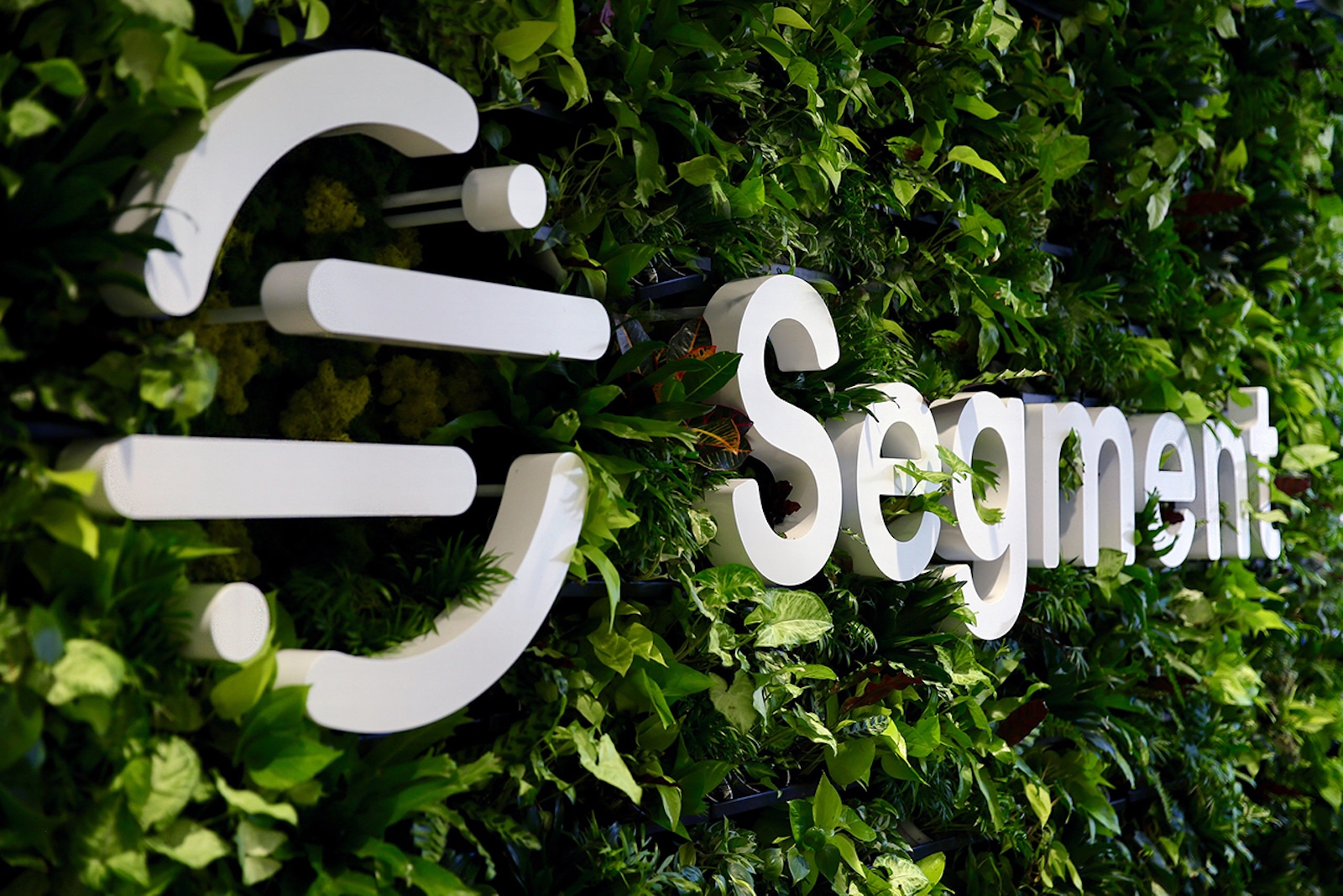
[Photo: Courtesy of Segment]
Endless Possibilities
Hills expects future workplaces to be increasingly green as more office workers tire of the old cubicle mindset. “Companies like Envestnet and Apple are stepping back and starting to do the research and really change the way their workplace looks,” he says. “Now you have office spaces with no walls and open offices with lots of glass to the outside. Even just having a view of plants or a picture of plants motivates people. These companies are trying to find innovative ways to keep their employees around.”
Freeman hopes people see the opportunity before them to do more, too, without getting caught up in things like uniformity and brand standards. He wants people to have fun with it. “One thing that really depresses me in office buildings is when you see the same plants—every other filing cabinet has the same trough of plants because they are supposed to look minimalist. That to me is not biophilic.”
He suggests varying plants’ texture, color, and height in different arrangements and giving employees a choice. People like choices. “It’s not just about the stuff that goes into the building; it’s about making the people who work in the buildings as comfortable as possible,” he says.
SURVEY SAYS
A recent USGBC survey indicates a majority of office workers want to work for companies that are value-oriented, take stances on important issues like sustainability, and do their part to make a positive difference in the world. In fact, 84% of the more than 1,000 U.S. workers surveyed said they prefer to work for a company with a strong mission and positive values.
When it comes to choosing a new job, findings show people’s decisions were influenced by whether or not the workplace was in a LEED-certified building. More than 90% of respondents in LEED-certified green buildings say they are satisfied on the job and 79% say they would choose a job in a LEED-certified building over a non-LEED building.
In addition, 85% of employees in LEED-certified buildings also say their access to quality outdoor views and natural sunlight boosts their overall productivity and happiness, and 80% say the enhanced air quality improves their physical health and comfort.

